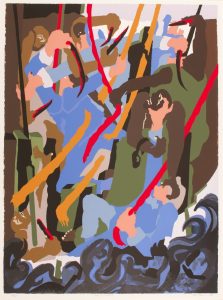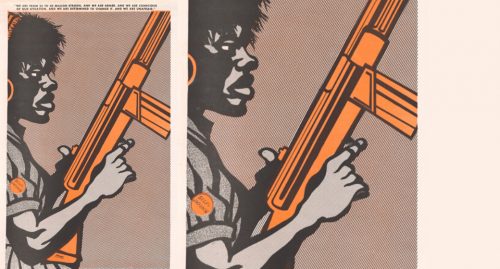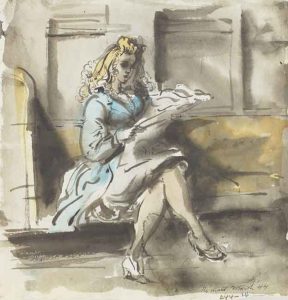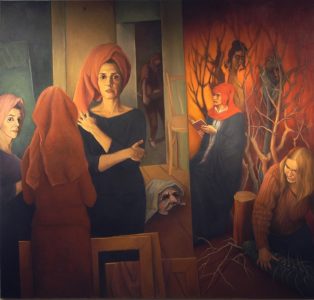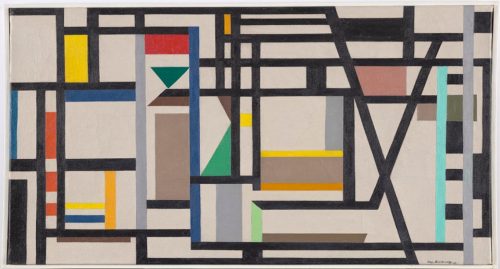This painting references the titular narrative poem by Dante Alighieri (1265-1321), a work of Italian literature originally published in 1320. Dante’s Divine Comedy chronicles the author’s supposed visit to the realms of the afterlife, narrated in first person. Towards the right of the composition, Dante the Pilgrim—the figure holding a book—traverses through Hell, indicated by the fiery orange background. Specifically, Peterson referenced the thirteenth canto of the Inferno, where Dante and his spiritual guide Virgil journey through the forest of the suicides in the seventh circle of Hell. In the Inferno, violence against oneself is punished by the transformation of the body into a tree where the mythical harpies nest. In the narrative, Dante plucks a twig from a gnarled branch, only to witness blood gush from the wound and the trunk angrily yelp at him.
